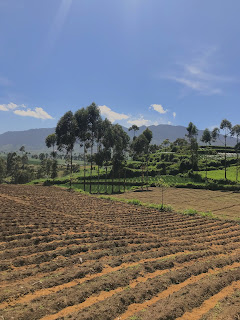tornado.
A tornado is a violently rotating column of air that extends from a thunderstorm to the ground. It's often portended by a dark, greenish sky. Black storm clouds gather. Baseball-size hail might fall. A funnel suddenly appears, as though descending from a cloud. The funnel hits the ground and roars forward with a sound like that of a freight train approaching. The tornado tears up everything in its path.
The windstorm is often referred to as a twister, whirlwind or cyclone,[1]although the word cyclone is used in meteorology to name a weather system with a low-pressure area in the center around which winds blow counterclockwise in the Northern Hemisphere and clockwise in the Southern.[2] Tornadoes come in many shapes and sizes, and they are often visible in the form of a condensation funnel originating from the base of a cumulonimbus cloud, with a cloud of rotating debris and dust beneath it. Most tornadoes have wind speeds less than 110 miles per hour (180 km/h), are about 250 feet (80 m) across, and travel a few miles (several kilometers) before dissipating. The most extreme tornadoes can attain wind speeds of more than 300 miles per hour (480 km/h), are more than two miles (3 km) in diameter, and stay on the ground for dozens of miles (more than 100 km).
Cause
Tornado season begins in early spring for the states along the Gulf of Mexico. The season follows the jet stream—as it swings farther north, so does tornado activity. May generally has more tornadoes than any other month, but April's twisters are usually more violent. Although they can occur at any time of the day or night, most tornadoes form in the late afternoon. By this time the sun has heated the ground and the atmosphere enough to produce thunderstorms.
Tornadoes form when warm, humid air collides with cold, dry air. The denser cold air is pushed over the warm air, usually producing thunderstorms. The warm air rises through the colder air, causing an updraft. The updraft will begin to rotate if winds vary sharply in speed or direction. As the rotating updraft, called a mesocycle, draws in more warm air from the moving thunderstorm, its rotation speed increases. Cool air fed by the jet stream, a strong band of wind in the atmosphere, provides even more energy. Water droplets from the mesocyclone's moist air form a funnel cloud. The funnel continues to grow and eventually it descends from the cloud. When it touches the ground, it becomes a tornado.
Characteristics
Once a tornado hits the ground, it may live for as little as a few seconds or as long as three hours. The average twister is about 660 feet (200 meters) wide and moves about 30 miles (50 kilometers) an hour. Most don't travel more than six miles (ten kilometers) before dying out. Massive tornadoes, however—the ones capable of widespread destruction and many deaths—can roar along as fast as 300 miles (480 kilometers) an hour.
Damage
Every year in the United States, tornadoes do about 400 million dollars in damage and kill about 70 people on average. Extremely high winds tear homes and businesses apart. Winds can also destroy bridges, flip trains, send cars and trucks flying, tear the bark off trees, and suck all the water from a riverbed. High winds sometimes kill or injure people by rolling them along the ground or dropping them from dangerous heights. But most tornado victims are struck by flying debris—roofing shingles, broken glass, doors, metal rods.
Actions to take when under a tornado warning
- If you can safely get to a sturdy building, then do so immediately.
- Go to a safe room, basement, or storm cellar.
- If you are in a building with no basement, then get to a small interior room on the lowest level.
- Stay away from windows, doors, and outside walls.
- Do not get under an overpass or bridge. You’re safer in a low, flat location.
- Watch out for flying debris that can cause injury or death.
- Use your arms to protect your head and neck.



Comments
Post a Comment